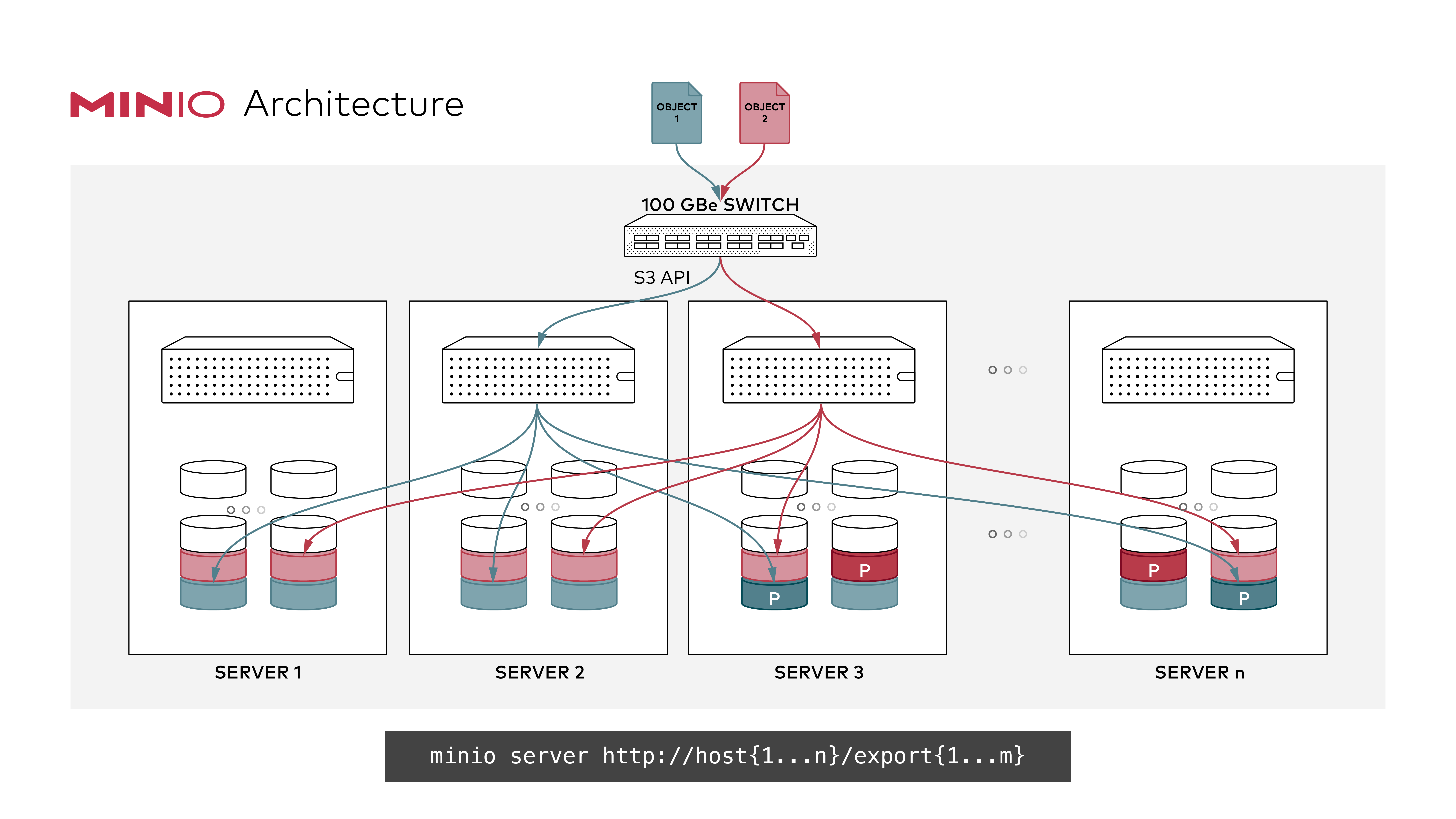- Sort Score
- Result 10 results
- Languages All
Results 1 - 10 of 10 for accessor (0.92 sec)
-
docs/bucket/lifecycle/README.md
This will allow transitioning of older objects to a different cluster or the public cloud by setting up transition rules in the bucket lifecycle configuration. This feature enables applications to optimize storage costs by moving less frequently accessed data to a cheaper storage without compromising accessibility of data. To transition objects in a bucket to a destination bucket on a different cluster, applications need to specify a transition tier defined on MinIO instead of storage...
Plain Text - Registered: Sun May 05 19:28:20 GMT 2024 - Last Modified: Sat Aug 26 07:33:25 GMT 2023 - 9K bytes - Viewed (1) -
docs/metrics/prometheus/README.md
- MinIO exports Prometheus compatible data by default which is resource centric as an authorized endpoint at `/minio/v2/metrics/resource`. All of these can be accessed via Prometheus dashboard. A sample list of exposed metrics along with their definition is available on our public demo server at ```sh curl https://play.min.io/minio/v2/metrics/cluster ```
Plain Text - Registered: Sun May 05 19:28:20 GMT 2024 - Last Modified: Fri Apr 12 15:49:30 GMT 2024 - 7.1K bytes - Viewed (0) -
docs/config/README.md
### Certificate Directory TLS certificates by default are expected to be stored under ``${HOME}/.minio/certs`` directory. You need to place certificates here to enable `HTTPS` based access. Read more about [How to secure access to MinIO server with TLS](https://min.io/docs/minio/linux/operations/network-encryption.html). Following is a sample directory structure for MinIO server with TLS certificates. ```shPlain Text - Registered: Sun May 05 19:28:20 GMT 2024 - Last Modified: Mon Sep 11 21:48:54 GMT 2023 - 17.7K bytes - Viewed (0) -
docs/kms/README.md
export MINIO_ROOT_PASSWORD=minio123 minio server ~/export ``` > The KES instance at `https://play.min.io:7373` is meant to experiment and provides a way to get started quickly. > Note that anyone can access or delete master keys at `https://play.min.io:7373`. You should run your own KES > instance in production. ## Configuration Guides A typical MinIO deployment that uses a KMS for SSE-S3 looks like this: ```
Plain Text - Registered: Sun May 05 19:28:20 GMT 2024 - Last Modified: Thu Jan 18 07:03:17 GMT 2024 - 7.1K bytes - Viewed (0) -
docs/ftp/README.md
## Scope - All IAM Credentials are allowed access excluding rotating credentials, rotating credentials are not allowed to login via FTP/SFTP ports, you must use S3 API port for if you are using rotating credentials. - Access to bucket(s) and object(s) are governed via IAM policies associated with the incoming login credentials. - Allows authentication and access for all
Plain Text - Registered: Sun May 05 19:28:20 GMT 2024 - Last Modified: Tue Apr 30 15:15:45 GMT 2024 - 7.1K bytes - Viewed (0) -
docs/site-replication/README.md
- All sites must be using the **same** external IDP(s) if any. - For [SSE-S3 or SSE-KMS encryption via KMS](https://min.io/docs/minio/linux/operations/server-side-encryption.html "MinIO KMS Guide"), all sites **must** have access to a central KMS deployment. This can be achieved via a central KES server or multiple KES servers (say one per site) connected via a central KMS (Vault) server. ## Configuring Site Replication
Plain Text - Registered: Sun May 05 19:28:20 GMT 2024 - Last Modified: Mon Feb 26 21:30:28 GMT 2024 - 3.4K bytes - Viewed (0) -
docs/bucket/notifications/README.md
index* (string) Elasticsearch index to store/update events, index is auto-created format* (namespace*|access) 'namespace' reflects current bucket/object list and 'access' reflects a journal of object operations, defaults to 'namespace' queue_dir (path) staging dir for undelivered messages e.g. '/home/events'
Plain Text - Registered: Sun May 05 19:28:20 GMT 2024 - Last Modified: Thu Jan 18 07:03:17 GMT 2024 - 84K bytes - Viewed (2) -
README.md
## Deployment Recommendations ### Allow port access for Firewalls By default MinIO uses the port 9000 to listen for incoming connections. If your platform blocks the port by default, you may need to enable access to the port. ### ufw For hosts with ufw enabled (Debian based distros), you can use `ufw` command to allow traffic to specific ports. Use below command to allow access to port 9000 ```sh ufw allow 9000 ```
Plain Text - Registered: Sun May 05 19:28:20 GMT 2024 - Last Modified: Wed Feb 14 17:51:34 GMT 2024 - 18.7K bytes - Viewed (0) -
docs/extensions/s3zip/README.md
The main limitation is that to update or delete content of a file inside a ZIP file the entire ZIP file must be replaced. ## How to enable S3 ZIP behavior ? Ensure to set the following header `x-minio-extract` to `true` in your S3 requests. ## How to access to files inside a ZIP archive
Plain Text - Registered: Sun May 05 19:28:20 GMT 2024 - Last Modified: Wed Apr 10 16:28:27 GMT 2024 - 3K bytes - Viewed (0) -
docs/distributed/README.md
 ### GNU/Linux and macOS ```sh export MINIO_ROOT_USER=<ACCESS_KEY> export MINIO_ROOT_PASSWORD=<SECRET_KEY> minio server http://host{1...n}/export{1...m} ```
Plain Text - Registered: Sun May 05 19:28:20 GMT 2024 - Last Modified: Thu Jan 18 07:03:17 GMT 2024 - 8.8K bytes - Viewed (0)